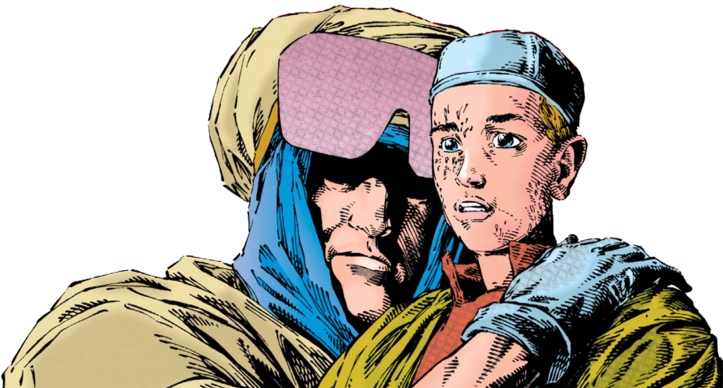
With more than two decades in the industry, Gene Ha has brought dramatically different styles to different projects, and when given the chance to stretch his imagination, has done so with gusto.
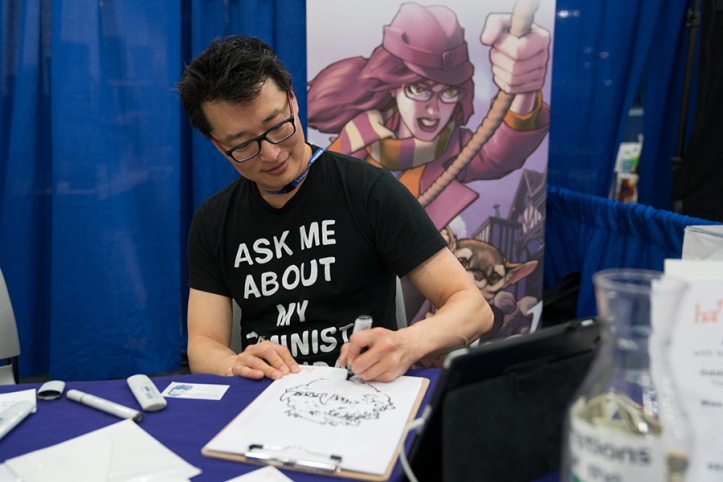
“It’s always in reaction to what the story is. I try to figure out what the best way to tell the story is,” Ha explained recently, while at Comicpalooza in Houston. “It’s kind of like a cinematographer: They don’t just stay with a single style if they’re doing different movies. … There’ll still be a signature look behind it all, but they’ll change a lot of the stuff they do just to make it all work right.”
This is a sentiment he brought to two of his biggest projects: establishing the origin of (soon to be movie star) Cable, and bringing one of Alan Moore’s most eclectic worlds to life.
Changing the Future with The Adventures of Cyclops and Phoenix
Ha found major success with the 1994 Marvel Comics mini-series The Adventures of Cyclops and Phoenix, revealing Cable childhood, set 2,000 years in the future.
While this future reality had been presented just a year before in Cable #1, it had been depicted as a world not unlike our own, with neon lights, cars, suits and ties, and other cultural aspects only marginally removed from today. Some of the most advanced technology involved an umbrellas that were physically attached to jackets.
Ha’s vision of this future was markedly different – as alien from the modern day as the modern day is from the start of the Common Era 2,000 years ago.
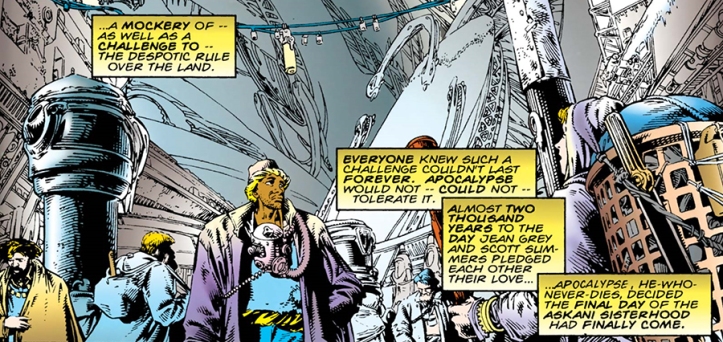
“You take your assumptions on how the futures going to work and keep on applying them and asking what still makes sense in the future and what doesn’t still make sense,” Ha said. “You want to keep some bits of the present day if you want to make a comment on the present day, but otherwise you can kind of comment on the effects of technology by just wiping away some sections of our culture.”
This meant buildings that hung in the sky in much the same way bricks don’t (apologies to Douglas Adams), robots that were printed via liquid metal-spewing machines (this was long before the pervasiveness of 3D printers), and light weight armor that made warriors seem like plastic versions of medieval knights.
“If you just take the standard technology available in the X-Men’s modern-day universe – hovering technology, anti-gravity technology, all this armor, things like that – and just applied it 2,000 years in the future, and kept on advancing it,” Ha said, explaining the surreal society’s conception.
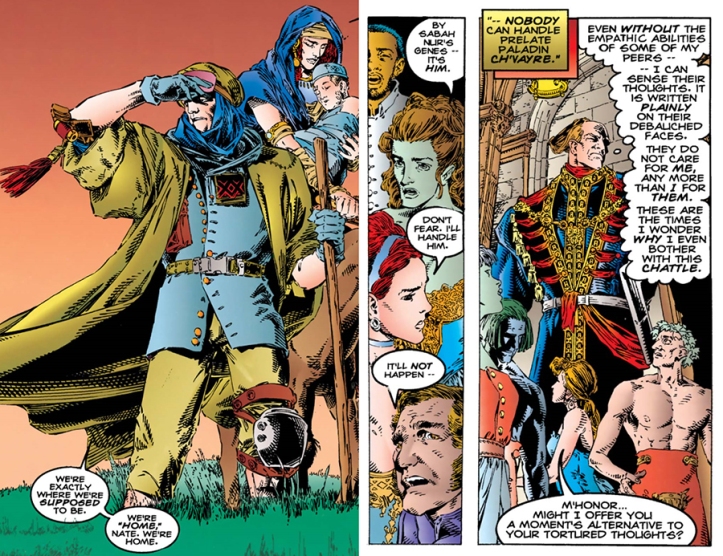
Clothing styles were also dramatically different. Gone were the ties and umbrellas of the reality’s previous appearance. This was a whole new world.
“It was a very hierarchical society with inherited rank and stuff like that, so you have very ornate dress. I was going back to the 19th century for a lot of the looks for the rich people,” he explained, adding that the poor of that dystopia were draped in whatever scraps they could find.
Ha returned to that world with the mini-series Askani’san, chronicling Cable’s teenage years, and other creators returned to it in subsequent stories.
Side-by-Side with Alan Moore in Top 10
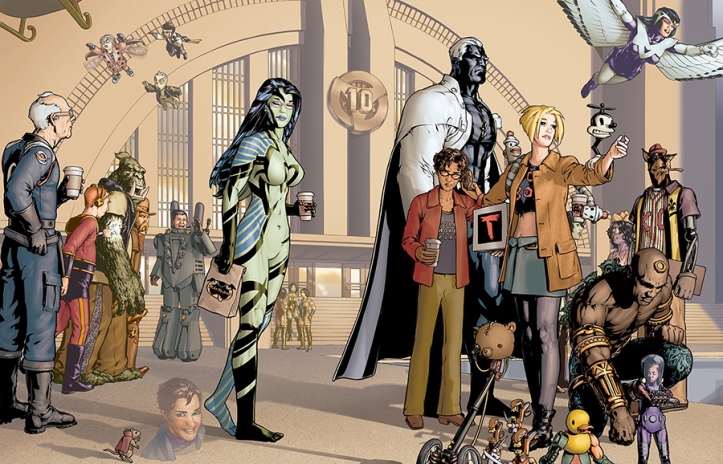
In 1999, Ha joined forces with the preeminent (and now mostly retired) comic book writer, Alan Moore.
“I got to talk to [comics’ painter] Alex Ross and I said to him, ‘I feel that you’re so lucky that you’re able to work with Alan Moore on … covers for Supreme.’ And he just said, ‘Well, why don’t you try to get an Alan Moore project of your own?’ I was like, ‘He’s right. I should be doing that.’”
Ha was excited to join Moore’s then forthcoming America’s Best Comics (ABC) line, an imprint of Wildstorm Comics.
“It’s part of Alan Moore’s theory that the imaginary realm is one giant realm,” Ha explained. “They’re all connected together inside of one giant glowing world, so it had to kind of reference present day ideas and past ideas and just mash them together. If you look at any of his recent projects, it’s all about that mash-up of everything from our imagination existing at once. It’s a big theme of his.”
Thinking he might get the Promethea assignment, which Ha felt (at the time) might be the easiest ABC project, he was surprised when Moore tasked him with Top 10, a book that had hundreds of colorful, superpowered characters in a mishmashed retro-futuristic world.
“He was right about that in that there was no way I could have done what J. H. Williams did on Promethea. He was exactly the right guy to do that, and I was the right guy to do Top 10.”
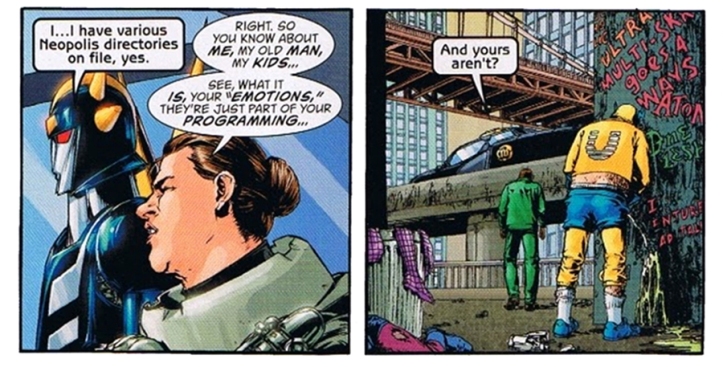
The series featured a police station in a city in which most residents have some sort of superpower, or who had been touched by superscience or fantastical magic in some way. Ross provided the covers.
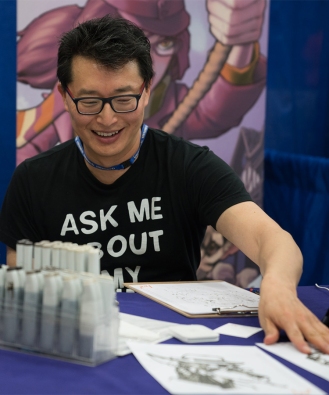
The experience left a lasting impression on Ha, as Moore has a reputation as one of the most eccentric and critically successful comic book writers.
“He is literally the fastest creative mind I’ve ever worked with, and I’ve worked with some really creative minds,” Ha recalled. “When I’m having a conversation with him and he throws out ideas, I can’t keep up. He’ll literally leave me in the dust.”
Moore would intricately plan out events and details in Top 10, but didn’t mind if artists left their own marks, as long as the story was intact. To that end, Ha was glad to be teamed up with Zander Cannon, who joined as layout artist mid-way through the production of the series’ first issue.

“He understood what Alan was trying to get accomplished better than I did, so he felt much more free to change things up,” Ha explained, adding he’d really love to work as an artist on Cannon’s scripts someday.
“My big goal in the industry has always been to work with great writers, and frankly most of the writers I’ve wanted to work with, I’ve had a chance to work with,” he said.
Ha is planning an upcoming project with writer Mark Waid, and would like to work more with Kurt Busiek in the future (although he did work with Busiek’s daughter Danny on Mae). This June he’ll be attending a festival honoring Jack Kirby’s 100th birthday in France before returning to the states.

[…] Gene Ha talks about working with Alan Moore on Top 10 and creating a new future as the setting for […]
[…] • Artist Gene Ha talks about working with Alan Moore on Top 10, published by America’s Best Comics (ABC) line, an imprint of Wildstorm Comics – and creating a new future as the setting for Cable’s early years in The Adventures of Cyclops and Phoenix in an interview for MoonMythic. […]
[…] • Artist Gene Ha talks about working with Alan Moore on Top 10, published by America’s Best Comics (ABC) line, an imprint of Wildstorm Comics – and creating a new future as the setting for Cable’s early years in The Adventures of Cyclops and Phoenix in an interview for MoonMythic. […]